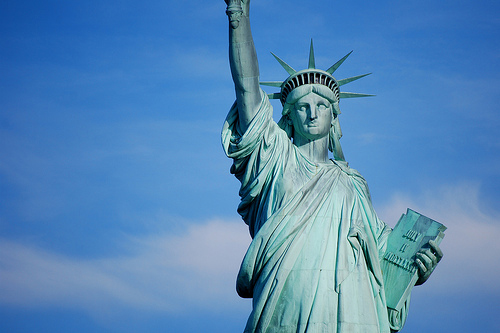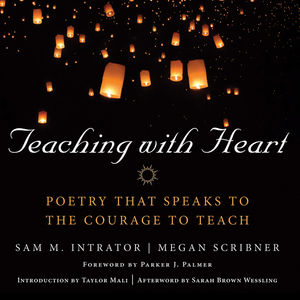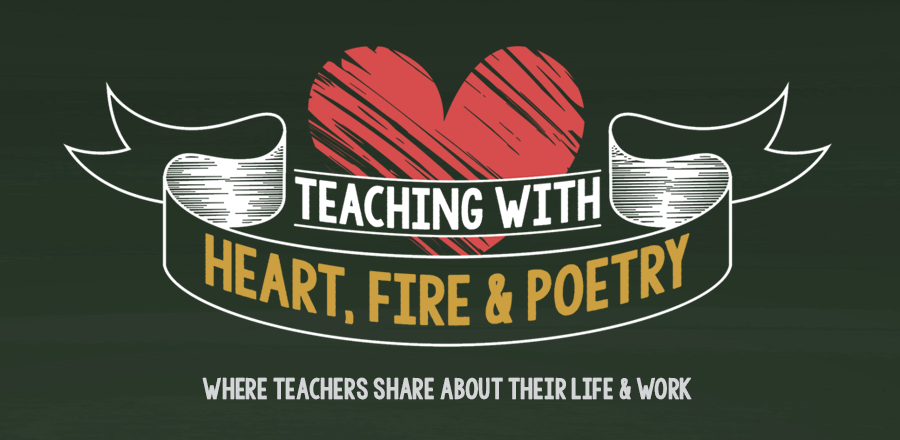 On this 4th of July, I want to take a moment to recognize the “every day” heroes amongst us. To “celebrate the spirit and courage of the 3.1 million
On this 4th of July, I want to take a moment to recognize the “every day” heroes amongst us. To “celebrate the spirit and courage of the 3.1 million
teachers who each and every day, despite many challenges and obstacles, strive to ‘lift a lamp’ in their classrooms.” (Teaching with Heart)
In his Foreword to Teaching with Heart, Parker J. Palmer wrote of the powerful and important work of teachers:
American teachers are our “culture heroes,” the true “first responders” to societal problems that “We the People” and our political leaders lack the wit or the will to solve, problems that show up first in the lives of the vulnerable young. Despite poor working conditions, teachers show up at school every day with welcoming smiles and thoughtful lesson plans developed on weekends and by the midnight oil. Despite the fact that they’re often underpaid and their schools are underfinanced, they do their work with full hearts, faithfully, and well. Despite the drumbeat of “accountability” that puts test scores above all else, they never forget that their ultimate responsibility is to this child, and this child, and this child. Despite the fact that they are surrounded by public misunderstanding and political interventions, they keep investing themselves in the promise with which every child is born.
As we read through the hundreds of teacher reflections submitted for Teaching with Heart, we were struck by their determination, commitment, and relentless optimism.
This spirit is captured in Randi Weingarten’s reflection on “The New Colossus” the poem engraved on the pedestal of the Statue of Liberty. Weingarten, president of the American Federation of Teachers, wrote that the poem is about “using power for good; and it’s a hopeful poem, almost defiantly optimistic. Educators are fueled by such optimism—without which we couldn’t do our work or instill hope in our students.” She also recognized the important role that teachers play in educating and nurturing “students who are tired, poor, “tempest-tost,” and yearning.” A particularly important role these days.
So on this day, we salute our teacher heroes! Thank you for all you do.
Here are “The New Colossus” and Randi Weingarten’s reflection on the poem. For more such reflections, please check out our book, Teaching with Heart. Order today for a 30% discount at Wiley.com. Be sure to use the discount code TWH30.
The New Colossus
Not like the brazen giant of Greek fame,
With conquering limbs astride from land to land;
Here at our sea-washed, sunset gates shall stand
A mighty woman with a torch, whose flame
Is the imprisoned lightning, and her name
Mother of Exiles. From her beacon-hand
Glows world-wide welcome; her mild eyes command
The air-bridged harbor that twin cities frame.
“Keep ancient lands, your storied pomp!” cries she
With silent lips. “Give me your tired, your poor,
Your huddled masses yearning to breathe free,
The wretched refuse of your teeming shore.
Send these, the homeless, tempest-tost to me,
I lift my lamp beside the golden door!”
—Emma Lazarus
 Randi Weingarten’s Reflection on “The New Colossus”
Randi Weingarten’s Reflection on “The New Colossus”
I have been drawn to this poem—engraved on the pedestal of the Statue of Liberty—for as long as I can remember. Emma Lazarus invokes an iconic image—the Colossus of Rhodes—but she turns the image on its head. Unlike the “conquering” Colossus of old, this new Colossus is welcoming and embracing, beckoning all to our land of possibility. It’s a New York poem (the “twin cities” refer to Manhattan and Brooklyn); it’s about using power for good; and it’s a hopeful poem, almost defiantly optimistic. Educators are fueled by such optimism—without which
we couldn’t do our work or instill hope in our students.
It’s a nineteenth-century poem with twenty-first-century relevance. In public school classrooms across America, teachers educate and nurture students who are tired, poor, “tempest-tost,” and yearning. Like Lazarus’s inspiration, teachers lift their lamp and help fulfill our collective responsibility to enable individual opportunity for each and every child.
The Statue of Liberty—often called the “Immigrant’s Statue”—serves as an inspiring reminder that America’s essence has been shaped by immigrants. Although I am infuriated that some officials want to pull up the ladder behind them, I am heartened by the movement to combat that impulse and turn instead to fixing our immigration system. And I am proud of the students and educators in our public schools, which provide so many immigrants with opportunities for advancement and have done much to realize the vision of e pluribus unum—out of many, one.
—Randi Weingarten
President
American Federation of Teachers
Washington, DC
photo credit: Celso Flores <a href=”http://www.flickr.com/photos/17509603@N00/4066553303″>NY Statue of Liberty</a> via <a href=”http://photopin.com”>photopin</a> <a href=”https://creativecommons.org/licenses/by/2.0/”>(license)</a>






Leave a Comment